
Northwest Xeric

Contributor
- Topics: Drought and Fire Resilience
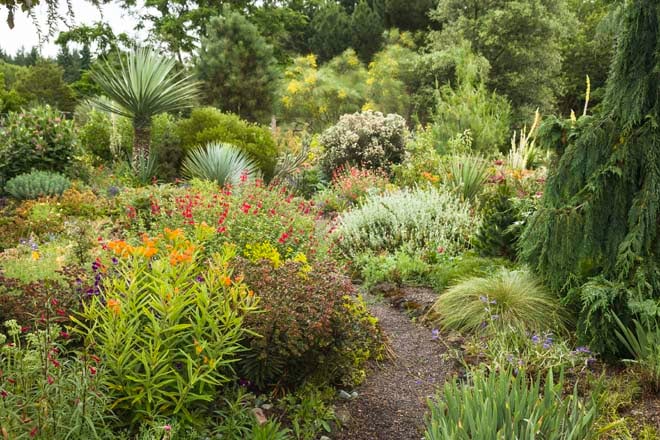
Marietta O’Byrne rolls her empty wheelbarrow to a stop. She waves her red-handled secateurs at the gravel mounds and pathways that delineate what she and her husband Ernie have named their chaparral garden. She says, “Most Northwest folks think of California-style gardening and say—‘We can’t do that.’ ”
However, on this hot Oregon summer day, the graveled beds around her feet prove otherwise. I’m here at the O’Byrne’s home and business, Northwest Garden Nursery, to find out how they grow xeric plants on the rainy side of the Cascade Mountains. Marietta explains, “It takes a little cultivation and some hardy plant material, but you can have a dry garden in the Pacific Northwest—gravel, not much water, and relatively low maintenance.”
This morning, flowers of Penstemon heterophyllus ‘Electric Blue’ and multi-colored P. ×mexicali hybrids bloom in profusion in the 800-square-foot area. Stately Verbascum bombyciferum ‘Arctic Summer’ stands among dark-leaved shiny sedums. Waving mounds of grasses punctuate the gravel—the narrow green leaves of Stipa barbata, golden panicles of tall S. gigantea, and the maroon awns of Molinia caerulea ‘Strahlenquelle’. “The name means ‘source of rays,’” notes Marietta referring to the purple moor grass’s German sobriquet.
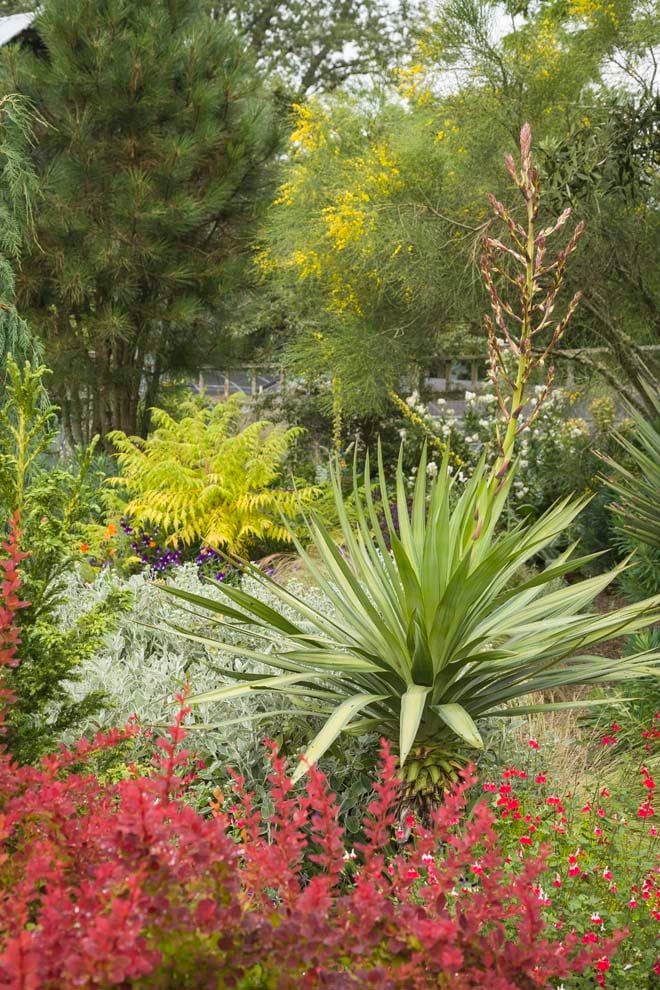
On this 90-degree day, Marietta and Ernie are swathed in sun hats and heavy gloves. With their water bottles at the ready, they are clippingfoliage, deadheading, talking about their favorite plants, sharing advice, and finishing each other’s sentences. I settle on a bench in the welcome shade of a Genista aetnensis, Mount Etna broom. Its limbs are festooned with sweetly scented yellow blossoms. I comment on the delightful aroma.
“Or,” says Marietta, pointing out a small rounded shrub studded with tiny white flowers near the pathway, “it might be that Daphne ×transatlantica. They call it Eternal Fragrance.”
I’ve never conducted an interview while the participants work, but why not? The couple’s life has been dominated for over 40 years by plants. Marietta and Ernie are the developers of the popular Winter Jewels® hellebore series. Northwest Garden Nursery, their wholesale hellebore operation, started out as a small-scale retail business to support the couple’s enthusiastic plant collecting. “We couldn’t buy what we wanted to grow,” says Ernie, “so we thought we’d do it ourselves.” They displayed many of the unusual plants they sold in a series of outdoor rooms covering an acre and a half around their 1918 farmhouse.
“Of course a vegetable garden was first,” Ernie notes. Then every few years they developed another section, including a woodland walk, a rock garden, an area of mixed conifers, and two long perennial borders that flank a basalt stone walkway with a concrete and river rock mandala by artist Jeffery Bale at its axis.
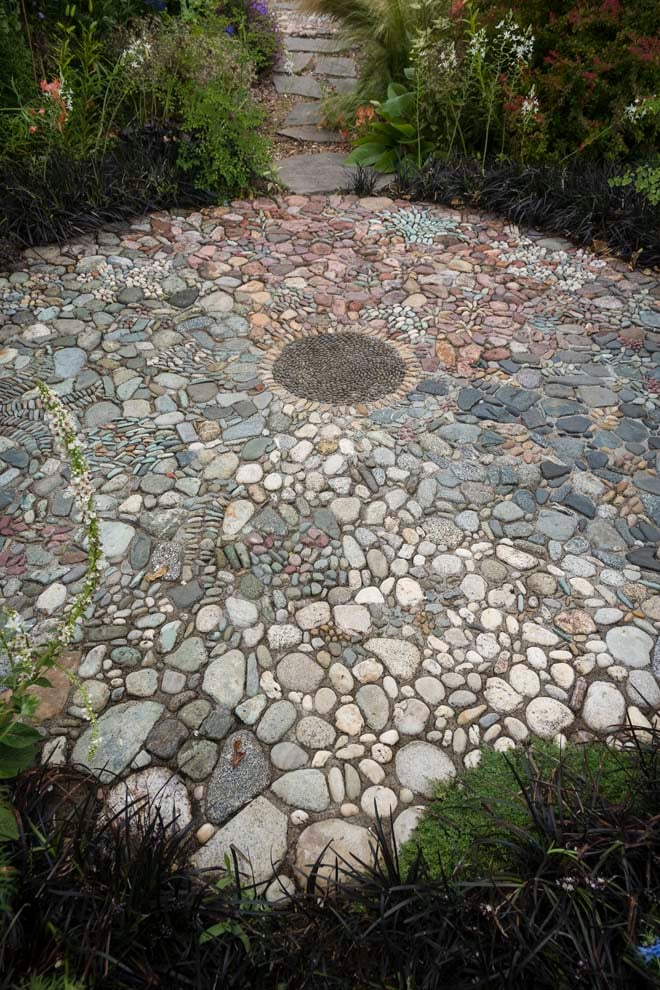
It’s no exaggeration to say the O’Byrnes think, breathe—and even sleep—plants.
Not only does Marietta admit to waking in the middle of the night mulling over new garden designs, but on warm summer evenings, they tell me, the two of them roll out their sleeping bags on that stone mandala. They drift off under the shifting stars, amid the scents and sounds of their garden. They’re roused in the morning by the clashing whir of dueling hummingbirds among the perennials.
That penchant for a purpose-built outdoor life of gardening, camping, hiking, and traveling the world— along with those homegrown vegetables—has allowed them both to stay lean and fit. They work the garden, bending over the plants with the grace and ease of long experience.
Their travels were the inspiration for this chaparral garden, the latest of their creations. “It’s like a hike through the Southwest,” Ernie says, “or hiking in the Cascades—high mountains—so beautiful and full of bloom.”
Marietta’s clippers are snick, snicking. “Reminds me of when we went to Utah, New Mexico, or California. Muhlenbergia, Pinus patula, and opuntia—I feel like I’m camping in the Southwest.”

hybrid seedlings against Rhus typhina ‘Tiger Eyes’. Photo: Mark Turner
Ernie doesn’t agree about the prickly pear. “Opuntia takes up too much room.” He turns to me. “We have a deal. If Marietta wants to grow cacti in the garden— she weeds it.”
Marietta ignores him. She says, “Just handle the pads with barbeque tongs. It’s not hard to curtail.”
Opuntia is one of the few points of contention for this couple. Through the years they have struggled as a team to solve their gardening challenges. Ironically, in rainy Oregon, the search for a reliable water source was difficult. Pacific Northwest rains—45 inches on average at this location—arrive from October to June; a summer supplement is vital. The couple drilled eight deep holes— Ernie describes it as “aerating the property”—before they came up with three wells that together produce a peak of 20-plus gallons a minute. The amount decreases throughout the summer until the autumn rains arrive. A series of timers and a holding tank allow them to get by. But every time they planned a new garden room, they promised each other, “This one will take less.”
With the chaparral garden, they finally achieved their water-wise goal. “We had a huge garden,” Ernie says, “and we still didn’t have a place to grow plants that didn’t want water.” Ten years ago they moved part of the chicken yard and built the chickens a handsome new cedar-and-wire fence that forms the eastern boundary of the drylands area.
Without digging into their sandy soil they piled up mounds of gravel between eight and twelve inches high. “If it were clay,” Ernie says, “I might have loosened it a bit.” They brought in local basalt gravel, quarter-ten open, which is screened for smaller debris and top-dressed with pea gravel for its interesting colors. “And it’s easier to pull the weeds,” Ernie notes. They use it for the pathways as well, renewing the garden each year with more as the stones mix into the soil below.
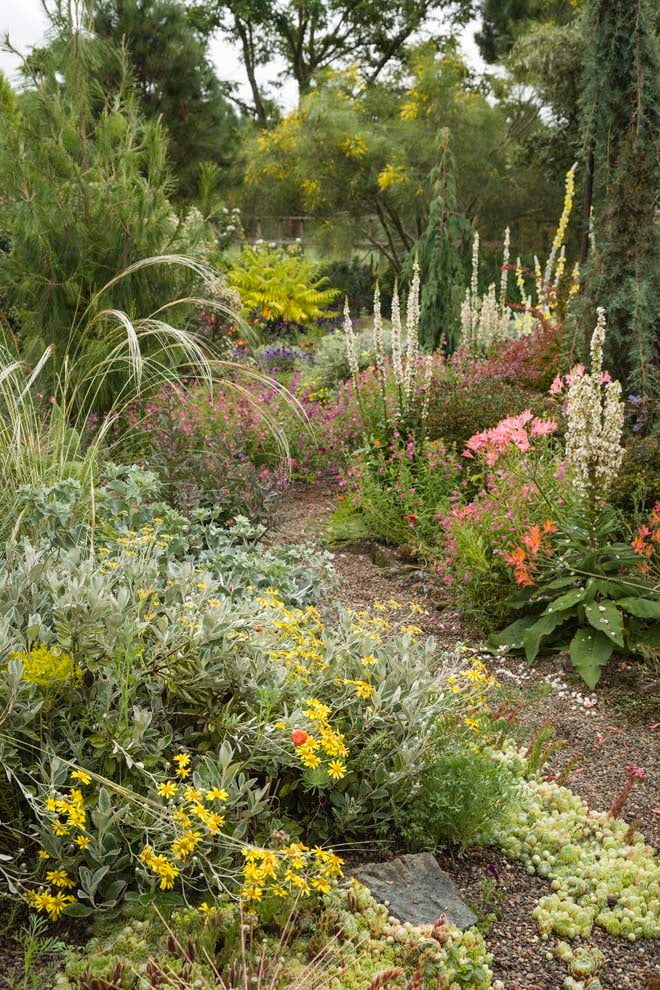
At first, it seemed impossible that the plants would grow into the gravel. The couple kept pulling the stones back and adding more organic matter. “But then we saw how everything took off—” says Ernie.
“—and things like penstemon and salvia did so much better,” adds Marietta.
Ernie agrees. “Eremurus never bloomed in other parts of the garden. Here they bloom beautifully.”
Back then it was, as they say, a rocky start. Ernie: “We planted species tulips—”
Marietta: “But we still don’t have species tulips, because the voles ate them.”
“And we didn’t fertilize—our soil is nitrogen-poor sandy silt.”
“Now we use bird guano.”
“It’s pelletized, which makes it easy.”
“Sprinkle it on in early spring—it’s such a difference. Opuntias love fertilizer. We learned that from Sean Hogan at Cistus.”
Ernie frowns at the mention of those opuntias. But he goes on, “We might not use fertilizer if our soil were clay—that has more nutrients.”
“At first we didn’t give any additional water. The plants survived, but looked stressed.”
“Here’s the secret—most dryland plants look better with a little water—could be an inch every two or three weeks, depending on how hot it gets.”
“And in winter we have a high water table—”
“So the stress of the water and cold leads to root fungus—Verticillium.”
“And Phytophthora.”
Marietta laughs and points across the bed. “Sometimes that’s an advantage. See that Russian olive (Elaeagnus angustifolia) over there? It has white fragrant flowers, grows to a certain height, and suckers—it could be rampant, but then the branches die back from Phytophthora. I cut them off and a sucker comes up. It’s actually self-control.”
Giving over control to the plants is one of the pleasures they both appreciate about gardening their chaparral area. Many plants volunteer. Marietta points out the Alstroemeria ligtu hybrids that keep displaying interesting new colors and low-growing purple-leaf sedums as examples.

However, profligate self-seeders do require some intervention. Marietta ruthlessly rogues out the orange California poppies that show up in the mix Eschscholzia ‘Thai Silk’—“Otherwise, after a while they’re all orange.” When they finish blooming, she cuts them back by half for a second flowering. She places small sticks next to favored colors so she can come back and gather seed, which she scatters around the beds.
Ernie says, “The trick is to find things that don’t overwhelm the other plants. We had what I thought was a horrible allium—very fragrant, got it from a seed exchange at the North American Rock Garden Society—turned out to be Allium neapolitanum, false garlic. We can’t get rid of it. It has tiny offset bulbs like little grains that fall off and reseed.”
He yanks at the spent leaves of alstroemeria as if they were the offending false garlic. “When the alstroemerias are finished, I don’t cut the stalks, I pull them,” he explains. “It doesn’t hurt them. They’re geophytes, not really bulbs but a rhizome, so pulling out the stems is what they need.”
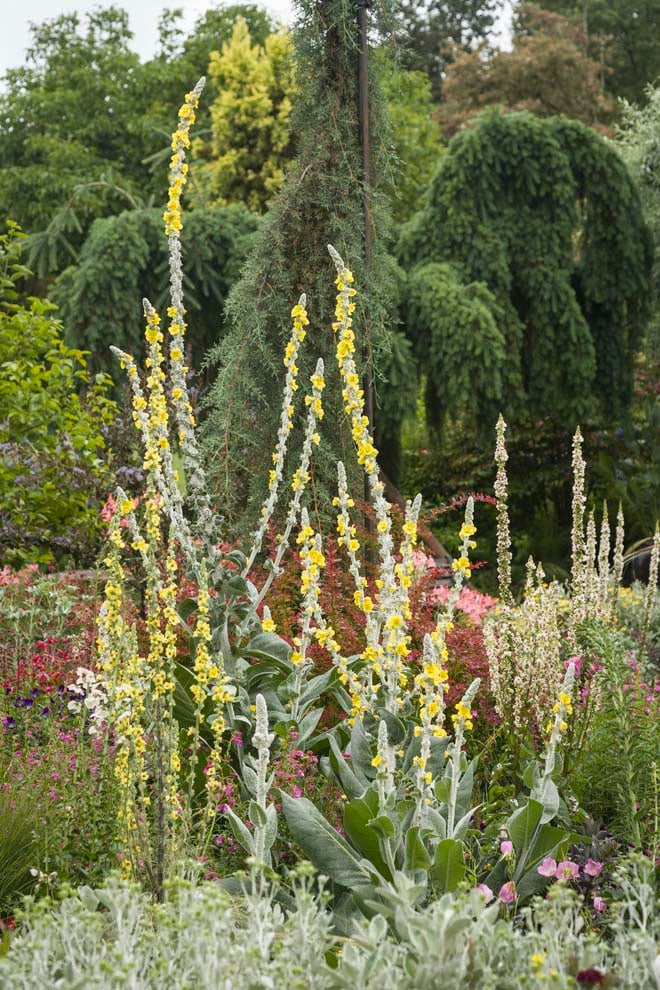
‘Polarsommer’, and Brachyglottis greyi front Cupressus arizonica var. glabra ‘Fastigiata’ and Pseudotsuga menziesii Pendula Group. Photo: Mark Turner
In spite of the heat, the wheelbarrow is filling rapidly. Marietta takes a swig from her water bottle and reflects on the taller plants she has placed in the gravel garden. “Shade is the biggest change that comes to a garden,” she says. “But it’s nice to have high points.”
Most xeric plants prefer sun. The couple chose fastigiate trees for their dramatic shapes and narrow shadows. They planted weeping Alaska cedar Chamaecyparis nootkatensis ‘Van Den Akker’—“It’s even better than ‘Green Arrow’,” Marietta observes—and a weeping form of Douglas fir, Pseudotsuga menziesii, pruning the lower branches on the fir so they can sit under it.
They also trim up the bottom branches of manzanitas like Arctostaphylos ‘Austin Griffiths’ and A. ‘Howard McMinn’. “Those branches die anyway, and it looks messy and dense,” observes Marietta.
“It’s really nice wood—” Ernie says.
“So lovely,” Marietta adds, “twisty and smooth—like muscle.”
Pruning creates more planting space underneath the tall plants often given over to bulbs such as crimson red Dichelostemma ida-maia, the yellow-flowered Triteleia ixioides ‘Starlight’, or the multi-pastels of Cyclamen coum.
They point out a few more favorites among so many. There’s the rounded form of the tough buckwheat Eriogonum umbellatum. And two oaks—Quercus hypoleucoides has gray- green leaves backed with silver-white indumentum, and Q. chrysolepis. “Obviously it doesn’t have exciting flowers,” Marietta admits, “but look at those glossy evergreen leaves.”
Their enthusiasm for what works never wanes. Ernie points out, “The colors on this Berberis thunbergii ‘Tangelo’ keep changing—red, orange, green inside it—from spring to fall.”
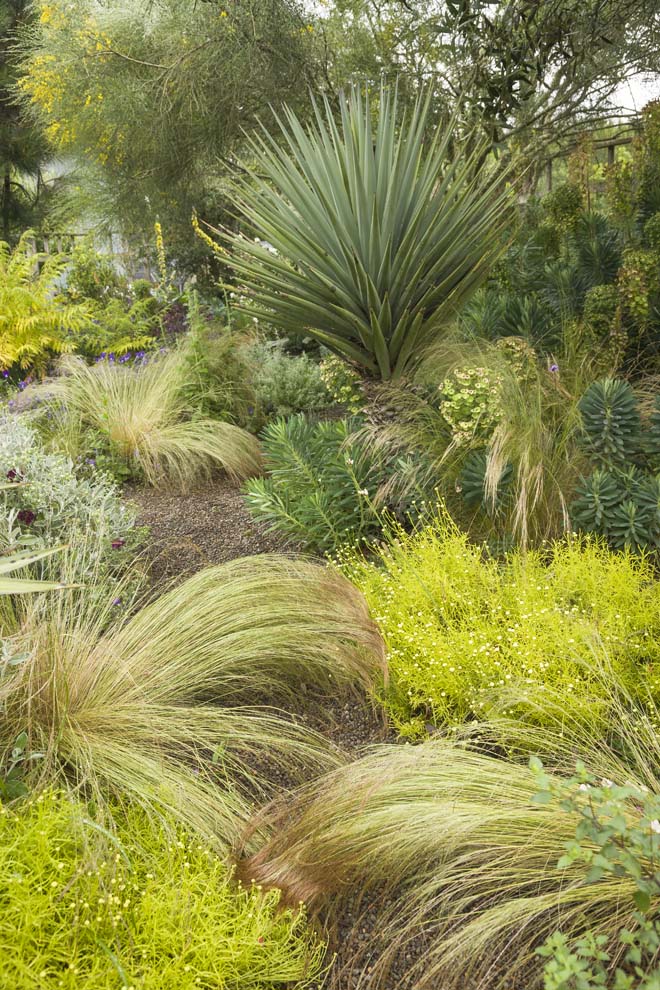
and blond waves of Stipa tenuissima. Photo: Mark Turner
Marietta thinks in terms of combinations—“How about a Vitex agnus-castus, coupled with golden Rhus typhina ‘Tiger Eyes’ plus the dark blue Agapanthus ‘Storm Cloud’?”
Of course, this garden is in the Pacific Northwest; they acknowledge the differences.
“We get rain instead of the snow that some of these high mountain plants need,” Ernie says.
“And this wildlands garden is a bit more concentrated than the real wilds.”
Marietta stands up and tosses a handful of weeds toward the wheelbarrow. “We don’t like to see spaces between plants.”
The couple maintains their garden based on what they’ve learned about the conditions where the plants grew originally. Sometimes the weather dictates maintenance decisions. Marietta prefers to allow both salvia and penstemon to stand with their dead stalks all winter long. “Yes, they look ratty,” she says. “But if you wait until the new growth starts at the base before you cut back, winter rains won’t get into the hollow old stems and cause rot.”

lend year-round structure to the landscape. Photo: Mark Turner
They don’t remove the lower browning leaves on Yucca rostrata ‘Sapphire Skies’ to give extra winter protection to the trunk. But they do cut off the bottom growth on the hardier Y. ×schottii. “They get black spot,” says Marietta.
“And there’s stuff we can’t grow,” Ernie says. “For instance, we can’t grow all the bottlebrushes.”
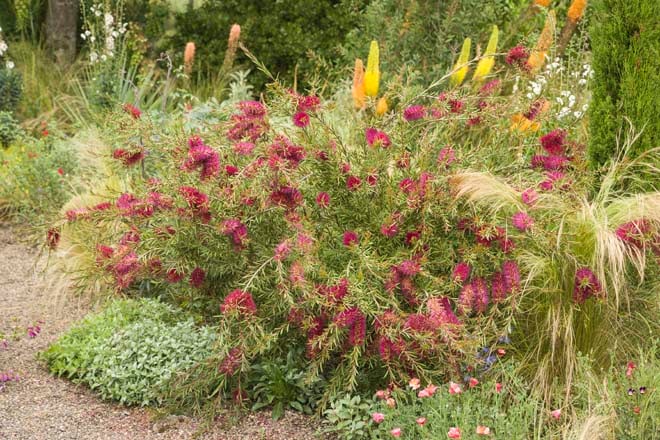
“We can do Callistemon pallidus ‘Eleanor’.”
“And fremontodendron dies in a bad freeze.”
But then Marietta amends Ernie’s last statement with the perpetual hope of gardeners everywhere. “Supposedly, fremontodendron is hardier with no summer water at all. So I’m trying it again.”
In a little over an hour, the couple has loaded a massive amount of plant material into the wheelbarrow, destined for the chicken yard where the hens will enjoy themselves. Marietta is pulling the last weeds at the base of Opuntia polyacantha ×macrorhiza—“This has gorgeous apricot flowers.”
I ask her if the extra care to grow these unthirsty plants is worth it. “Oh yes,” she says. “It really is low maintenance and great beauty throughout the year. Along the perennial walk in winter, it looks pretty bare, but here in this garden—everything is so structural. Besides, you can go away for a week or two in summer, and not have to worry about water. That’s worth it. Ow!!!”
Opuntia has bitten back.
Ernie looks up from the loaded wheelbarrow. To his lifetime gardening partner he says with complete sincerity, “Sorry.”
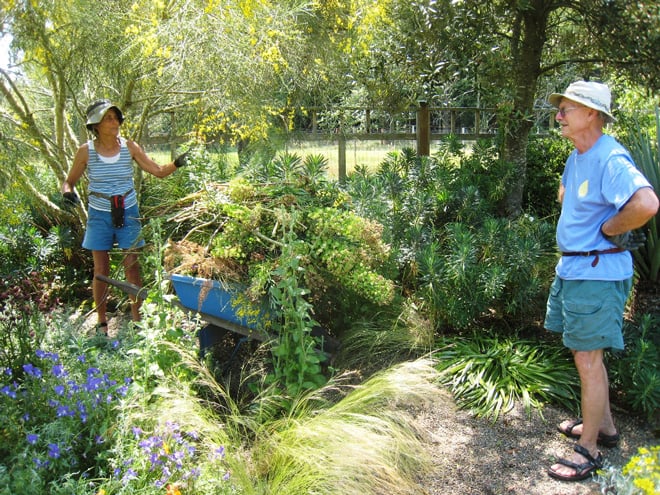
Share:
Social Media
Garden Futurist Podcast
Most Popular
Videos
Topics
Related Posts
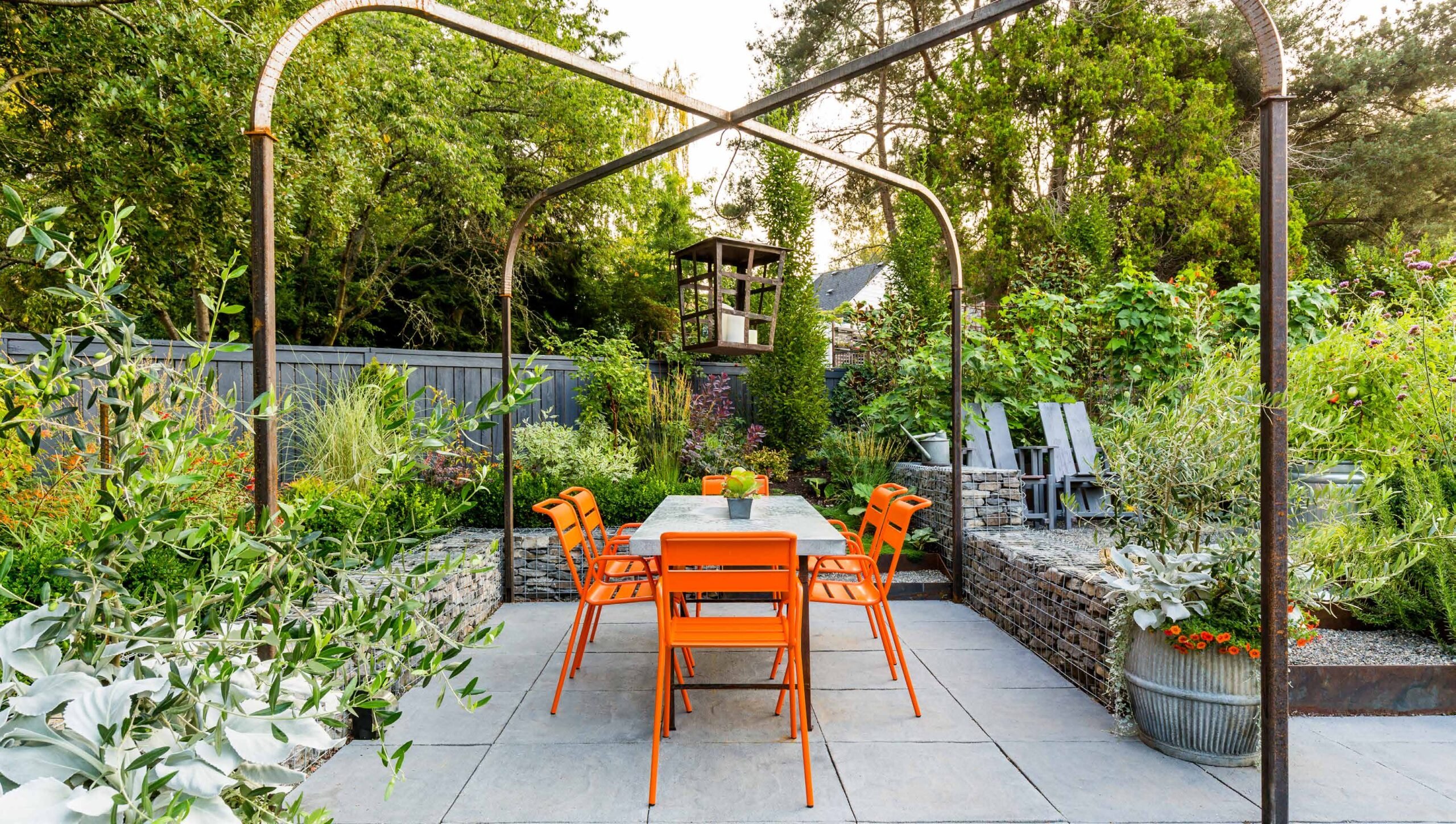
Design Futurist Award Announced: Committee Shares Vision
March 8, 2023 At Pacific Horticulture, we believe that beauty can be defined not only by gorgeous plants and design, but also by how gardens
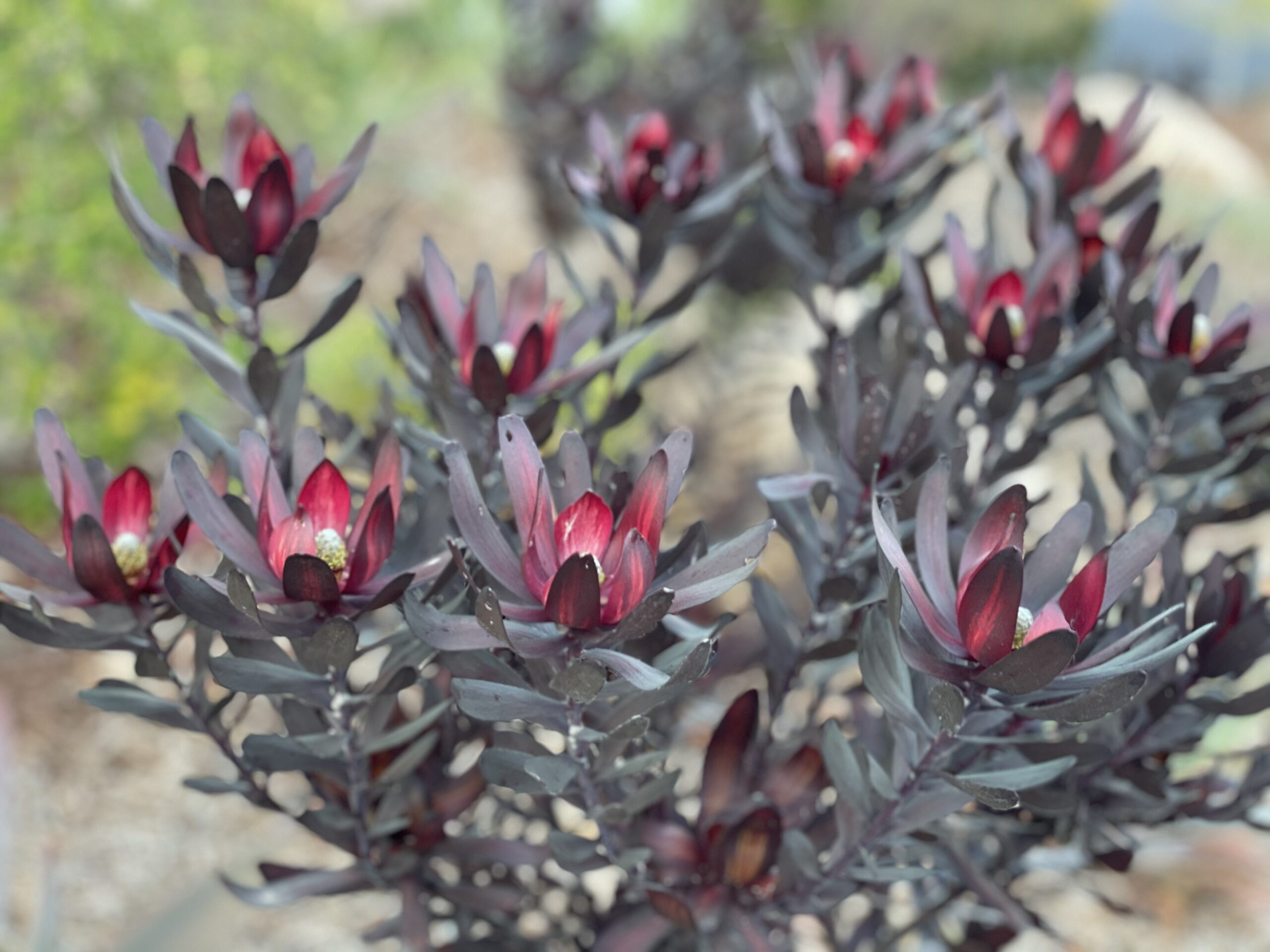
Expand Your Palette: Waterwise Plants for your Landscape
There’s nothing more thrilling to plant lovers than discovering new plants to test in the garden. Here in the southernmost corner of California, we have
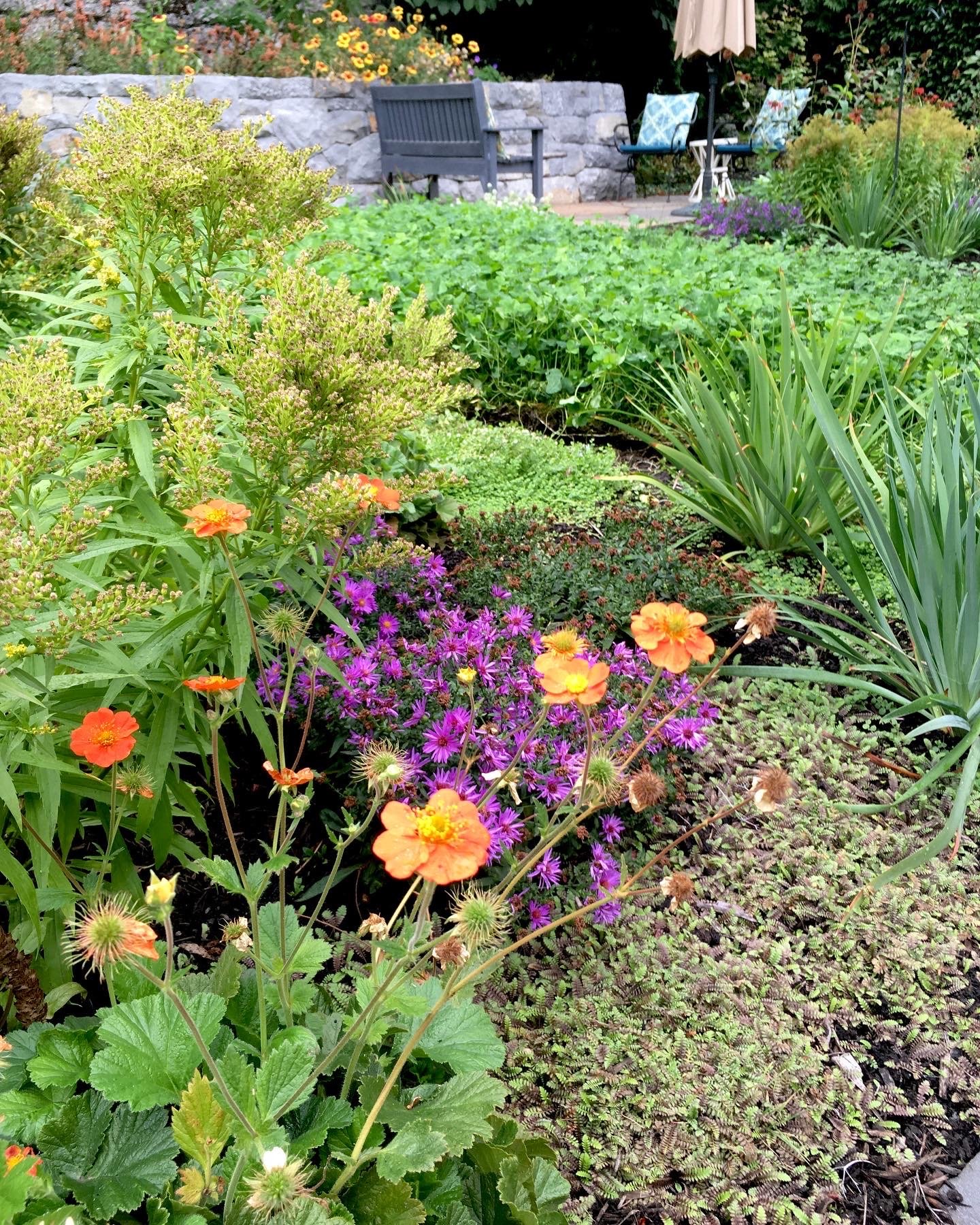
Nature Therapy from the Contemplative Garden
Winter 2022 Women’s hushed morning voices mingled with crashing waves and chattering crows. “The kettle’s still hot.” “Can you pass the honey?” Whoosh, crash, caw,

Portland Parks’ “Nature Patches”
Winter 2022 Nature is so beautiful when left to its own devices, yet crisply manicured lawns remain a status symbol. This is true in Portland,











Responses